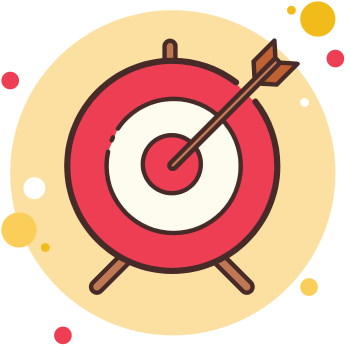blog
Can You Really Make Money By Blogging?
Can You Really Make Money By Blogging?

Blogging has been around for a long time on the Internet. It started out as a creative outlet for people to take their personal journals online to share with family and friends.
It branched out into outlets of information to be shared by experts and now people use them for a money-making opportunity.
Millions of people visit blogs every day for information or entertainment purposes. A lot of the blog visitors are ones that come back to check in on the latest entries into a blogger’s world.
They link their blog to your blog, which increases your reader base. The blog’s traffic becomes so huge that your chances for earning increase. Using AdSense ads are the most popular way to generate income from your blog.
By strategically placing the ads on the blog, you can entice visitors to click on them, with each click earning you a share of the profits Google takes in. While a couple of clicks earn you very little, a high flow of traffic and clicks earns you a substantial amount.
To make a lot of money with AdSense, you have to drive traffic to the blog. The most important concept with AdSense is to remember that you have to make the ads visible and not hidden somewhere in the blog where they can’t be seen. The more people who click away, the more money you’ll make.
Another way some people make money from their blogs is by using advertisement space. Advertisers scramble to place one of their banners on the more popular blogs. They’re willing to pay you based on the traffic numbers you generate and the prime space available within your blog.
There are many ways you can monetize ad space. You might charge a flat fee, take a commission based on the number of click-throughs, or make a deal where you get a percentage of the sale of a product, much like an affiliate marketer does.
Choose a topic that has a high number of searches, launch a free blog at Blogger.com or WordPress.com, and strategically implement your ads and offers to start seeing a steady income build over time.
However, if you want to take blogging seriously, you need to consider paying for hosting and a domain name and using WordPress.org because you will have much more control over your blog and this is critical for your success in the long run if you are thinking about using your blog as a serious money maker.
Now you have your blog up and running, you need to get traffic to it and spread the word about it and there are a number of ways to do that.
Where To Advertise Your Blog For The Best Results

Getting your blog set up is the easy part of the process. Now comes the difficult part – getting visitors! You need to find traffic to come to your blog or it won’t be a profitable investment of your time.
Start with the free options and as you begin to see a return on your investment of time, you can invest some profits back into marketing your blog with paid options.
Free
- Join message board communities. This is a simple way to advertise your blog. Interact with your fellow users and advertise your blog in your signature line, if it’s allowed. If it’s not allowed, there’s usually a folder available within that forum that does allow you to advertise your sites. Use them.
- Join a social networking site. These sites are a good way to network with like-minded people who are interested in the same subject your blog is about. Join the community and get to know the other members and then you can supply them with a link to your blog. Many in social networking circles provide cross-promotions, so you’ll probably accumulate a lot of valuable backlinks to your blog.
- Utilize social bookmarking sites. Write a great thought provoking post on your blog and submit it to sites like Digg.com or del.icio.us. There are hundreds of people who spend hours at these sites searching for good websites to check out. Your blog can get a surge of traffic through this strategic and viral sharing method.
- Join a blogging community like BlogEngage (Paid) or DoSplash. This offers you a way of connecting with other bloggers who may do a review of your blog on theirs, which would help drive more traffic to your site.
Paid
- Use advertising campaigns like Google AdWords. Place an ad on the search engine result pages and pay only when someone clicks on the link. Make sure you use the best keywords to get the ad noticed, so that you can drive more traffic to your blog.
- Use text link advertising. Contact some of the more popular blogs in your niche and see if they would be willing to sell you some advertising space through text links. If the price is right, take the chance to have traffic driven to your site from theirs. Not all sites will be willing to do this, so keep trying different ones until you get one to say yes.
And remember, if you want a premium training on blogging the right way, check out the Rapid Blogging Blueprint which includes over the shoulder training on blogging the right way.
Or, if you just want some more basics to see whether blogging is right for you, check out the featured resource below for a free Blogging Fundamentals report; download, read it and take action 😊

Develop A Content Publishing Calendar For Your Blog

Creating a content calendar that includes matching promos, helps ensure that you meet business goals, such as list building. When you plan your written content, match it to an existing or new opt-in freebie.
Write it all on your content calendar so you can remember what purpose each item serves.
OK, let’s look at how you can flesh out your content marketing calendar.
Set Your Goals

A few goals you might set are to expand brand awareness, promote thought leadership, increase word of mouth, get more leads, or make sales.
A funny meme can help you get more likes, shares, retweets, and spread brand awareness.
Product & Freebie Benefits

The best way to ensure that your content works with your products and freebies is to get familiar with them.
In other words, you must know “what’s in it for them” and what problem it solves.
Plan Publishing Frequency

Always publish to your website first and foremost. It will serve as the hub of your business and support content will lead visitors back to the site.
If you add “supporting content” on social sites, you can safely plan on adding something several times per day. Make sure each addition is “fresh”; otherwise, you will lose followers, instead of gaining opt-in subscribers.
Create, Curate, Or Contract

You’ll want to create some of the content yourself, but content can also be easily be curated or contracted out.
Another option is to collect related bits of information from multiple places to create something new.
Write it Down

Once you have created your plan, write it down.
You can use a spreadsheet or even a Google Calendar. The WordPress Editorial Calendar plugin can also help you pre-schedule and keep track of your website’s content.
All of this is content, so it makes sense to plan a week or more at the same time. Planning this way helps to ensure that you have every piece of content needed to meet your goals. In this case, the main goal focuses on growing your mailing list.
Post Content Regularly

Posting content on a regular basis is important. When you post unique content in a variety of places, it gives your audience more opportunities to see what you’re publishing and promoting.
Therefore, stick to your plan and ensure that you add new, relevant content on a regular basis.
Website/Blog

Content comes in many forms. Add a variety to keep readers’ interest and meet their needs. Inform and educate your audience with relevant audio, video, memes, infographics, charts, interviews, how-tos, statistics, and more.
What’s important is that you post something regularly, at least three times a week, to drive traffic to the content and the related opt-in offer.
Social Media

Each social media platform has a different “personality” so it’s important to post regularly. It’s also important to look at your analytics so you can identify when your audience is most active and reading.
However, check the rules and “best practices” at each platform to get recommendations specific to that site.

Don’t neglect to email your subscribers regularly about new content on the website or provide them with exclusive info related to that content.
Ask subscribers to “share” the website content with their friends, associates, and even customers/clients, when appropriate.
Enlist the help of your subscribers and reward them for that assistance with a special offer just for them.
Guest Posting

To get more traffic and opt-in subscribers from your guest posts, link to an opt-in that is relevant to the audience in your author profile or byline.
This gives you a huge incentive to guest post exceptional content frequently.
This is a win-win-win opportunity when you post on a regular basis.
Providing content for a variety of locations helps to increase targeted traffic and targeted traffic increases opt-in rates. The more you publish, the more people read your quality content and see your opt-in offer…unless your headlines aren’t persuading viewers to click to read more.
And remember, if you want to know the best way to get started with blogging you can check out Rapid Blogging Blueprint, a premium training on creating and monetising a blog the right way.
Or you can simply click on the featured resource below for a free Blogging Fundamentals report; download, read it and take action 😊

How To Make Your Blog More Appealing

Every blogger who earns income from their blog knows that the only way you can make money is by getting and keeping the traffic coming. Without your readers, you wouldn’t be making money at all.
With them goes their blog’s traffic that you could’ve benefited from if they’d linked to you. Here are some tips to make your blog appealing enough to keep the traffic there to earn you some money.
Design

The most common mistake some bloggers make is in their blog’s design. Blog readers not only look for interesting and informative content – they also want to come to an inviting space to read it.
The blog’s design needs to be inviting to them and comforting. It’s crucial not to have anything that would annoy them to the point of leaving because they can’t stand it. Make sure you’re not annoying them with colored font that’s hard to read or a bunch of graphics that are too distracting.
It’s fine to use colored font for your posts, but make sure it’s easy to read. A pale yellow font color against a pure white background may be too difficult for the visitors to read. They shouldn’t clash with the background color either. Clashing colors can give visitors headaches, so they’ll leave your site without bookmarking it for a later visit.
Content

The other common mistake bloggers tend to make is with their content. Some bloggers don’t update very often. If you only post once a month, your readers will forget you’re there and won’t return to your site.
Some bloggers also make the mistake of only providing text content to their blogs. Text posts are great, but mix it up a little every once in awhile with multi-media formats. Provide some interesting pictures, audio files and videos. Offer a little variety and your visitors will come back to check and see what else you’ve been up to.
It’s also important to stick to your blog’s niche topic. If you’re blogging about Homeschooling, then stick to that topic. Providing information about a celebrity’s latest excursion will turn off your readers unless it somehow relates to homeschooling.
Of course, having a good looking blog is only part of the puzzle. You have seen that you need great content to share with your readers but how do you go about finding and creating that content? Let’s take a closer look…
How To Find Great Content For Your Blog

In order to make your blog a successful money making entity, you’ll need to get traffic to it and keep them coming back.
Even the most successful bloggers start to run out of their own original content to post about. Some resort to scraping the bottom of the barrel to find things to discuss, but that ultimately loses them readers, which means less money streaming in.
Ideas

Where do you find great ideas to post about? There are actually many different things to use to get you out of your stuck-in-a-rut mode. These may be simple techniques to use, but they can be effective if used right. Here are some things to try the next time you get stuck for something to write about:
Scour the news sites – Search the news sites like CNN, MSNBC, and FOXNEWS and see if you can find a top story that you can blog about. Instead of just linking to the story, add your own accounting of it.
Check out your fellow blogger’s sites and see what they’re blogging about – It may seem unethical, but as long as you’re not stealing content, it’s perfectly acceptable to see what the community is interested in.
Is there a post that catches your eye? Is there something you can add to that post? A new spin you can put on it? Media outlets always have an eye on the competition to see what others are doing – and you should, too!
Research

Internet research – Do a search on the Internet for your blog’s topic. See what information you can come up with concerning your niche.
You may become inspired by something you’ve read there or you may think of some comments to post about it.
And what about podcasts or audio sites? You could try searching sites like Soundcloud to find audio to add to blog posts to enhance them for your readers.
Reviews

Consider doing reviews – Reviews can be a good filler to use while you try to get inspired again. Choose some articles, websites, books or whatever you can think of that’s related to your blog’s topic and post a review of it. If it’s a good review, add your affiliate link and make some money from your opinions!
If your blog is about flowers and you happened to go for a walk and saw some flowers on the way, use that as your post. Let your readers know what kinds of flowers are seen in your neighborhood and if possible, take come pictures to add since visual stimulation enhances the reader’s experience.
You can easily get back your inspiration for your blog posting if you look to other sources. They can help you come up with ideas of what you can share with your readers or they can give you a nice filler until your personal inspiration comes back. Don’t lose readers just because you’ve lost your blogging muse!
If you really want to know more about the power of blogging, you can take a look at the Rapid Blogging Blueprint training course or if you just want a few pointers for now you can grab the featured resource below for a free blogging report; download, read it and take action 🙂

Use Blog Challenges To Coach New Online Marketers

If you’re an Internet marketer who teaches Internet marketing to others, it’s important to help the readers of your blog learn how to adapt to a blogging ritual seamlessly.
Blogging is one of those tasks that many new marketers jump into without understanding how it works. They know they need to blog (because all of the top successful marketers do), and maybe for a few days – or even weeks – they stick to it religiously.
They sit there staring at the screen, unable to decide what they’re going to blog about. Sometimes they start swiping other people’s content because they don’t want to lose the momentum of posting daily.
They might grab something from an article directory or buy some PLR content and use it as is. This is where they start getting lazy, not because they want to be, but because they’re simply lost on what topic to discuss.
Others don’t want to neglect their blog – but the formidable task of trying to juggle a myriad of Internet marketing items on their to do list prevents them from getting to their blog – they’ve backburnered it and soon it’s forgotten and stagnant.
You can host a blog challenge for your readers that will help them in any niche! Whether they’re marketing bloggers, or they have a blog on gardens, insomnia, or dating – your challenge will help them take action, stay committed and view you as a leader.
OK, let’s crack on…
What Blogging Challenges Do Your Readers Suffer From?

You should be able to listen to your subscribers and see some common themes among them when they come to you with blog problems. If you don’t have subscribers yet (that you know of since many are lurkers), then you might have to read other blog comments or look in forums to see what issues people have.
Finding topics is a common problem for many bloggers. People sit there staring at their screen, or they go to someone else’s blog to see what they’re talking about.
They key is to help them learn how to find topics – how to dig up new slants and fresh ideas and give commentary on them.
Making an engaging connection is a big deal – and so many marketers falter with this. Everyone wants to see blog comments or get emails about how amazing their blog post was!
Monetizing their blog post could be an issue. You wouldn’t believe how many bloggers are sitting there wondering why their blog isn’t making money, when the only problem is, they forgot to add links!
Consistency is probably the number one problem, though. People get sidetracked and for some reason, their blog – what should be their “home on the ‘net” – is what usually suffers.
Preparing Your Blog Challenge Ahead Of Time

Hosting a blog challenge is a great way to get a ton of branding for your blog, as well as traffic and comments for it, too. You want to go into this well-prepared, not floundering right alongside your readers – they’re expecting you to guide them!
First, announce the date ahead of time. Get everyone geared up to participate. Have them sign up – either simply by announcing their participation in the comments section of your blog, or by having them sign up to your email autoresponder list.
Let them know what the basic challenge will be. Create a list of rules, but don’t make it so stringent that people feel like labeling themselves failures. You want to inspire them and encourage them to keep going even if they miss a blog post.
Map out your helpful blog posts that you’re going to create along the way. You will be blogging daily to give tips and ideas, share your own entry to the challenge, and create a space for them to discuss it and encourage each other.
Some people might want you to create a forum for the discussions. Keep it on your blog. As the host of the challenge, your blog will benefit from the traffic and conversations taking place.
Give them any tools and tutorials you think they’ll need. If your blog challenge is to have them get comments, then you might steer them towards something like Disqus and give a tutorial on how that works.
This is not only a good way to be a leader, but it can help you make affiliate sales of certain links for people’s blogs, like paid plugins or WordPress themes, for example.
Supporting Your Challengers

As the host, it’s your job to support the people who are following you and participating in your challenge. Now if you have hundreds of people, it might be more difficult – in that case, you can just encourage people to support each other.
Allow them to share their blog post link. You can let them leave it in the actual comment as a live link, use a tool like Disqus, or just have their name hyperlinked to their website.
Leave a comment for them to show them they have traffic and encourage comments and sharing by others. By the time the challenge is over, they will have a thriving community – many will stay and at the very least, it shows search engines and new visitors that this person has an active blog!
Check in with those who stray. When everyone signs up, make a list of the name and email of the people participating. If you notice someone falling by the wayside, shoot them a friendly email of support. Sometimes they just need to be nudged.
Challenge Idea #1: Encourage New Media Formats

Blogging isn’t just about text blog content, although that is the most prevalent for of blogging that there is.
You can host a challenge that urges participants to get used to multiple media formats.
This will get people out of their comfort zones, but it will help them learn how to cater to many of their subscribers across the board. When the challenge is finished, they’ll be able to use more than one format and switch things up for their audience.
Challenge Idea #2: 1-A-Day Affiliate Marketing Reviews

Because affiliate marketing can be so profitable through the use of a blog platform, it’s important that you help your readers learn how to master this.
For your affiliate blogging challenge, have some guideline steps like this:
- Pick one product over $25 (or $50 or $100 or whatever)
- Make sure it’s rated at least 4 stars
- Write a review of at least 500 words per blog post
- Each blog post should have specs, pros, cons, and consumer insight
- Blog posts should have at least 2 hyperlinks to product (*Optional – 1 hyperlink to a top competitor product)
These kinds of details will help them from getting stuck trying to decide between one product and another. It also gives them guidance on the structure of the blog post.
Challenge Idea #3: Thought-Provoking Shareable Content

These are fantastic challenges to do on your blog. The concept of this challenge is pure 100% quality. You’re asking your readers to create blog posts that knock the socks off of their readers.
This isn’t about monetizing the exact blog post – but it can result in increased income because they gain a loyal following. This is definitely one you’ll want to give them time to map out a couple of weeks ahead of schedule.
The goal here is to make sure they have their social networking buttons working. You want their visitors Tweeting, Google + sharing and Facebook sharing these blog posts because they’re that good.
Challenge Idea #4: Curated Blog Content

Curation is a buzzword in marketing circles, but it’s a fantastic way to build a blog readership! First, you need to explain to your readers what curation means. You don’t want them getting confused and swiping other people’s content and plagiarizing it.
Curation is when you act similar to how a museum curator acts – gathering pieces to represent a concept as a whole. The curator then provides commentary about the pieces to pull it all together.
They can curate a video from YouTube, a news story, or an audio file quote. Make sure they understand that it’s not about sharing someone else’s work – it’s about adding their own insight about that work and giving the original creator credit with a link.
Curation doesn’t always have to be positive. It can be a negative curation, where they’re showing poor examples of something. Just make sure they understand they might get some heat for this from the first author.
Challenge Idea #5: One Idea Fits Everyone

This is a good twist, but only if everyone is in the same niche. If you’re teaching other marketers, then this would be a viable possibility. If you have one in the gardening niche, another in dating and one in smoking cessation, this won’t work.
Everyone in the challenge would write about that topic. It’s interesting to see what slants people have on issues. So for instance, you might have these on your list:
- Top 5 Conversion Tips
- Review of the Plugin ThriveLeads
- Is JVZoo Better Than ClickBank?
Whatever topic you want to choose – see what the slants turn out to be after they are published. Don’t tell them what to write, just give them the basics. Your group will love being in these blog challenges and seeing their productivity soar!
By the way, if you want to know more about blogging the right way, why not check out the featured resource below for a free blogging report. Download, read it and take action 😊

Which Type Of Blog Should You Create To Make A Profit?

So, you have decided that you want to make money online and want to start with blogging. That’s great but do you know what type of blog you should be creating if you want to monetise it?
And if you have an existing business, why not incorporate a blog into that too to boost your earnings 😊
There are several different types of blogs out there. Not all will earn you money… and even those that you think will generate an income, might not – if you commit a few cardinal errors.
This article will shed light on a few types of blogs and what you can do with them. Instead of pigeonholing the blogs into specific categories, it’s important that you view them based on their income-generating possibilities rather than the purpose for which they’re built.
OK, let’s crack on…
Personal Blogs

These types of blogs have very low income-generating potential. Generally, they’re nothing more than online ramblings where you write about your thoughts and feelings on what’s going on in your life, etc.
For example, a lady who has a personal blog may decide to write about make-up tips and so on and start promoting cosmetics, skin care products, etc. It’s possible – but difficult to make money with this type of blog.
Niche-Specific Blogs

These are the most common types of blogs which are created to target a specific audience. If you wish to do affiliate marketing or sell your own products, you’ll want to create these niche blogs.
It’s important to get an umbrella domain for the market while you niche down. What does that mean?
Let’s assume you wish to create a blog on ‘homemade dog food’, buying a domain that’s too closely related to the niche such as DogFoodZone.com will stifle your growth. What if you wish to blog about dog training in future?
Instead, you may buy a domain such as HealthyPaws101.com (this domain is probably taken, but you get the idea).
Well, with the HealthyPaws101 domain, you can start blogging about puppy training. It will be a new category on your blog. As time goes by and you start going deep into each different and related category, you’ll have an authority site.
This is how authority sites are built. They’re just a niche sites that grew big.
Journey-Type Sites

These sites are similar to personal blogs, but they have a purpose here. Let’s assume you’re overweight and decide to go on a weight loss journey. So, you start a blog to journal your progress and let people know what you’re doing.
When you have progress, you can share what tools and methods you’re using. If you’re following a program such as P90X, and losing weight, you can share your affiliate link to the Beachbody website and make commissions when others sign up.
Herein lies the crux of this type of blog – You MUST be making progress and succeeding for people to trust you.
It doesn’t matter if it’s an online marketing blog or a keto blog or even a calisthenics blog. You MUST have results for people to trust you. Your success and progress will spur them to trust your journey and do what you’re doing – and buy what you’re using.
Curation Blogs

These are blogs with different topics that you’ll curate content from different sites.
Beginners would do well to steer clear of these types of sites. You’re better off targeting one niche and building a brand and an audience.
Guest Post Blogs

Similar to curation, but you’ll be vetting the different guest posts and only posting what’s relevant to your niche. This is more of a technique than a type of blog per se. Some blogs are totally made up of guest posts… while others have lots of content created by the blog owner and the guest posts are also thrown into the mix.
You’ll need to decide if you need guest posts to supplement your content marketing efforts or if you’d rather have a blog where all content is proprietary (with no need for outbound links).
Besides these types of blogs, there are blogs that are dedicated to teaching… or the pursuit of a certain lifestyle, etc.
The profitability of a blog is dictated by its ability to sell. You’ll do that with affiliate links, product links, ads, and also build a list that you can re-market to in future.
While you don’t need all these components in place, you definitely need the list building and the links that translate to sales. Your blog only makes money when people buy from or through you.
Create a blog that people love because of its value… and they’ll trust you and buy whatever you recommend.
“Successful blogging is not about one time hits. It’s about building a loyal following over time.” – David Aston







